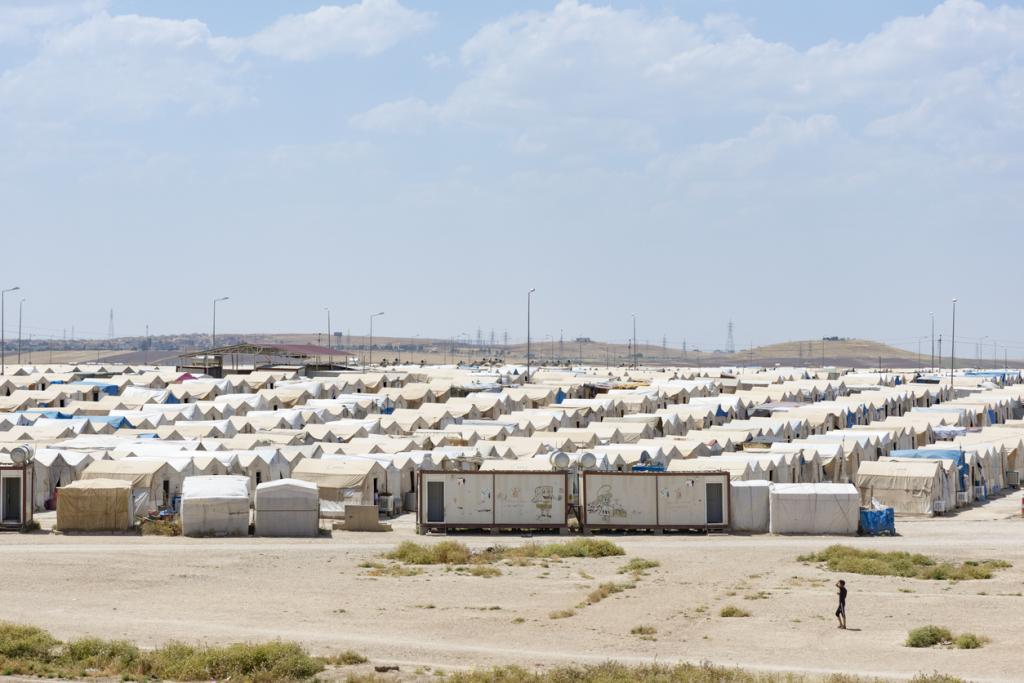The present major humanitarian crisis in the Middle East has made Europe acutely aware, once again, of its entangled, multifaceted history with the region. Yet, scholars of the history of humanitarian aid have often overlooked the role played in the past by international organisations, international associations (i.e. the predecessors of today’s NGOs) and “great” powers. On 7–9 February 2018, a conference titled “Crises in the Middle East: Humanitarianism, Religion and Diplomacy, c. 1860 to 1970” took place at the Leibniz Institute of European History in Mainz, Germany. Davide Rodogno, Professor of International History at the Graduate Institute, presented a contribution on “Multiple Allegiances of ABCFM Missionaries Working for the Near East Relief during and in the Aftermath of the First World War”.
Professor Davide Rodogno’s paper is based on his ongoing research for a book project that investigates relief and rehabilitation programmes after the Great War, when what we consider today to be the Middle East (formerly the Near East) was being shaped. His interest in this project is driven by the larger question of how European and American humanitarian endeavours were tied to programmes that went well beyond the question of providing relief and involved more ambitious purposes. The project historicises the emergence of “development programmes” well before the generally accepted idea that they emerged after the Second World War. Moreover, it examines a significant relationship between the idea of “self-help” (“self-empowerment”) as a core principle in understanding of development today and that of the principles of social engineering, which often are considered to be antagonistic concepts in the contemporary humanitarian world. In this paper, and more broadly the book project, Professor Rodogno looks at institutions – secular and faith-based, governmental and non-governmental – that revealed a political world informed by imperial and colonial contexts as well that of race and civilisation. One of the points of his research is that the whole question of who was then called a “humanitarian” actor should be given more attention because of the multiple roles that many men and women on the ground played.
In his paper, Professor Rodogno focusses on the under-examined role of the American Board Commission for Foreign Missions (ABCFM) and its relations with Near East Relief (NER). The ABCFM was the oldest, biggest and most extensively present US faith-based institution in the Near East. NER was a chartered American institution, officially non-religious, whose humanitarian objectives were universalists and non-sectarian. NER desperately needed men and women on the spot. Hence, hundreds of missionaries served as NER officers, as “experts”, since they spoke local languages and were social workers, directors of orphanages, medical doctors, etc. If one juxtaposes a map of the presence and activities of both organisations, there is a not-so-surprising overlap.
American missionaries involved in the work of NER undertook significant humanitarian actions in the realms of nutrition, health, local markets, economics and education. After 1923, there was a geographical paradox inherent in these processes because American missionaries had been pushed out of the nascent Turkish state and had to operate from its fringes, in Soviet Armenia, or Syria and Lebanon under the French Mandate, or in Greece. Through NER, American missionaries of the ABCFM were able to operate across in the crumbling remains of the Ottoman Empire, but they had strong interests to return to Anatolia and Asia Minor due to vast assets that had been invested there for almost a century. Ultimately, they were able to negotiate a tenuous compromise with Atatürk consisting in relatively “secularised” education programmes particularly for Muslim elites. The ABCFM was ambiguous as to the non-secular nature of this education because of possible negative repercussions on its own image and work. Ultimately, NER and the ABCFM parted ways. In 1930 NER became the Near East Foundation that still exists today. The latter was created upon the model of the Rockefeller Foundation.
Professor Rodogno considers the many allegiances of the missionaries as responses to the political volatility and complexities of the time. The political actions of the missionaries and of NER reflect a remarkable awareness and navigation of the issues of sovereignty and geopolitical rivalries. They were quite successful in expanding their activities wherever sovereignty seemed more fragmented. Missionaries’ allegiances were multiple and extended to their own institution and assets: NER, the American government, their identity as Americans, as well as a strong identification with the Armenian victims of the genocide. Many of the missionaries advocated and hoped that the American government would accept the “moral responsibility” and take actions to protect these populations. Some even argued that the United States should become a mandatory power for Armenia and possibly Turkey – for many, the Turkey they had in mind stretched from Istanbul to Palestine. This point has not received much attention in the existing literature.
The question of responsibility connects the above to present-day politics of humanitarianism. The language of responsibility to protect was extensively prevalent and quite systematically mobilised. The ideal of “responsibility to protect” has been used, misused and misinterpreted by politicians and policymakers for a long time. The replacement of “humanitarian intervention” with this doctrine in the early 2000s reflects the festering malaise felt by many people towards an ambiguous, unpleasant and discomforting terminology of “humanitarian intervention”. This is due to the embeddedness of the humanitarian intervention – but also, equally, of the responsibility to protect – in imperial and colonial projects. This is not to say that actors and institutions did not have a genuine faith in their projects to improve people’s lives. One could be reminded of this dynamic even today when looking at NGO narratives. There is an increasing awareness of the huge discrepancies between the myth of allegedly “perfect plans” as reflected in the official publications and websites, and the reality on the ground. Much like today, humanitarians sought to control many of the contingencies, which was in reality not possible.
* * * * *
By Aditya Kiran Kakati, PhD candidate in International History and Anthropology and Sociology.


